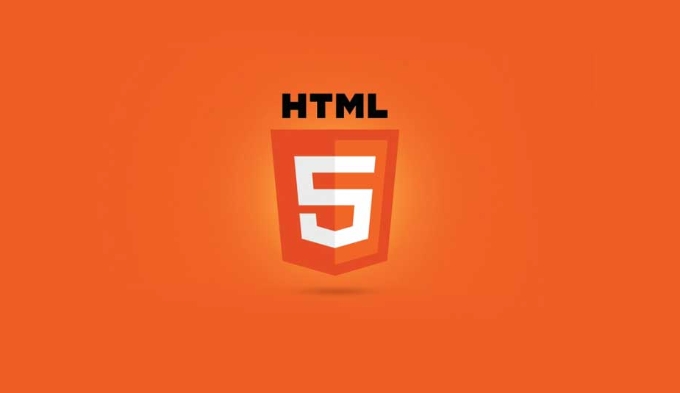Applying HTML5 Principles to Responsive Web Design
Jul 15, 2025 am 12:14 AMHTML5 improves responsive design through semantic tags, viewport control, responsive pictures and form optimization. 1. Use semantic tags such as

The core of responsive web design is to allow the website to automatically adapt to the screen sizes of different devices, and HTML5 provides many semantic tags and new features to make this process clearer and more efficient. To put it directly into the key point: HTML5 is not just a structural markup tool. When used in combination with responsive design, it can improve maintainability, enhance semantic expression, and simplify layout logic .

The following is based on several common needs and talk about how to use the features of HTML5 in responsive design.
1. Use semantic labels to improve structural clarity
HTML5 introduces semantic tags like <header></header> , <nav></nav> , <main></main> , <section></section> , <article></article> , <footer></footer> . They are not just "better-looking" writing, but make the page structure easier to be understood by browsers, search engines and auxiliary tools.

In responsive design, clear structure means you can arrange content blocks flexibly according to different devices. for example:
- On the desktop side, you may want the sidebar
<aside></aside>to be placed next to the main content; - On the mobile side, you can let it hide or move to the bottom.
These adjustments will be more intuitive through CSS media queries, provided that your HTML structure itself is clearly divided.

Suggested practices:
- Wrap the main content with
<main></main>; - Put navigation in
<nav></nav>; - Avoid abuse of
<div> and give priority to semantic tags;<li> Combined with ARIA attributes to improve accessibility experience.</li> <hr> <h3 id="Use-viewport-meta-tags-to-control-mobile-display"> 2. Use viewport meta tags to control mobile display</h3> <p> This is the most basic but easiest point in responsive design. HTML5 allows you to add a viewport meta tag to <code>to tell mobile devices how to zoom the page.<meta name="viewport" content="width=device-width, initial-scale=1">
Without this line of code, many mobile browsers will render the page with desktop width, resulting in too small text and need to be manually scaled.
FAQ:
- Forgot to add this tag;
- Incorrectly set
initial-scaleoruser-scalable=no(affects user experience); - I mistakenly thought that media queries could do everything, and ignored the basic viewport settings.
suggestion:
- Each responsive page must be added with a viewport;
- Do not disable user scaling (unless there are special reasons);
- If you want to adapt to a high-resolution screen, you can also use
devicePixelRatiofor additional processing.
3. Responsive processing of pictures and multimedia
HTML5 provides
<picture>and<source>tags, allowing you to load different image resources according to different screen sizes. This is very important for responsive design, as large images not only waste bandwidth on small screens, but also impact performance.For example:
<picture> <source srcset="large.jpg" media="(min-width: 1024px)"> <source srcset="medium.jpg" media="(min-width: 600px)"> <img src="/static/imghw/default1.png" data-src="small.jpg" class="lazy" alt="example picture"> </picture>
The benefits of doing this are:
- The mobile side will not load large images;
- Improve loading speed;
- Better adaptation to Retina screens;
- Different formats can be specified (such as WebP).
Notes:
- The picture path must be correct;
- Don't over-segment breakpoints;
- You can use
srcsetandsizesto achieve finer granular control.
4. Form input and mobile optimization
HTML5 form control has added many new types, such as
email,tel,date,number, etc. These types are especially useful on mobile because they trigger the corresponding virtual keyboard to improve the user experience.For example:
<input type="email" placeholder="Please enter your email"> <input type="tel" placeholder="Mobile phone number">
On mobile devices, the former will pop up a keyboard with the @ symbol, while the latter will display a numeric keyboard to reduce user input errors.
Practical Tips:
- Use the appropriate input type;
- Add
placeholderprompt; - Use
requiredattribute for simple verification; - Work with JavaScript to do more complex verification logic.
Basically that's it. HTML5 itself is not the whole of responsive design, but it provides a range of practical tools to make building responsive websites more natural and controllable. As long as you pay more attention to the key points of structure, viewport, pictures and forms, you can lay a good foundation.
The above is the detailed content of Applying HTML5 Principles to Responsive Web Design. For more information, please follow other related articles on the PHP Chinese website!

Hot AI Tools

Undress AI Tool
Undress images for free

Undresser.AI Undress
AI-powered app for creating realistic nude photos

AI Clothes Remover
Online AI tool for removing clothes from photos.

Clothoff.io
AI clothes remover

Video Face Swap
Swap faces in any video effortlessly with our completely free AI face swap tool!

Hot Article

Hot Tools

Notepad++7.3.1
Easy-to-use and free code editor

SublimeText3 Chinese version
Chinese version, very easy to use

Zend Studio 13.0.1
Powerful PHP integrated development environment

Dreamweaver CS6
Visual web development tools

SublimeText3 Mac version
God-level code editing software (SublimeText3)
 Handling reconnections and errors with HTML5 Server-Sent Events.
Jul 03, 2025 am 02:28 AM
Handling reconnections and errors with HTML5 Server-Sent Events.
Jul 03, 2025 am 02:28 AM
When using HTML5SSE, the methods to deal with reconnection and errors include: 1. Understand the default reconnection mechanism. EventSource retrys 3 seconds after the connection is interrupted by default. You can customize the interval through the retry field; 2. Listen to the error event to deal with connection failure or parsing errors, distinguish error types and execute corresponding logic, such as network problems relying on automatic reconnection, server errors manually delay reconnection, and authentication failure refresh token; 3. Actively control the reconnection logic, such as manually closing and rebuilding the connection, setting the maximum number of retry times, combining navigator.onLine to judge network status to optimize the retry strategy. These measures can improve application stability and user experience.
 Integrating CSS and JavaScript effectively with HTML5 structure.
Jul 12, 2025 am 03:01 AM
Integrating CSS and JavaScript effectively with HTML5 structure.
Jul 12, 2025 am 03:01 AM
HTML5, CSS and JavaScript should be efficiently combined with semantic tags, reasonable loading order and decoupling design. 1. Use HTML5 semantic tags, such as improving structural clarity and maintainability, which is conducive to SEO and barrier-free access; 2. CSS should be placed in, use external files and split by module to avoid inline styles and delayed loading problems; 3. JavaScript is recommended to be introduced in front, and use defer or async to load asynchronously to avoid blocking rendering; 4. Reduce strong dependence between the three, drive behavior through data-* attributes and class name control status, and improve collaboration efficiency through unified naming specifications. These methods can effectively optimize page performance and collaborate with teams.
 How to control HTML5 video and audio playback using JavaScript?
Jun 24, 2025 am 12:38 AM
How to control HTML5 video and audio playback using JavaScript?
Jun 24, 2025 am 12:38 AM
To control HTML5 video and audio playback using JavaScript, master the following key operations to achieve basic control. 1. Start or pause play can be achieved through the .play() and .pause() methods, and it is recommended to trigger through user interaction to be compatible with mobile browsers; 2. Control the volume and set the value from 0 to 1 through the volume attribute, and switch by setting the muted attribute to true or false; 3. Jump to a specific time to play, you can use the currentTime attribute, which supports direct assignment or increase or decrease the current time, and it is recommended to add error handling; 4. Listen to the playback status changes can be achieved through events such as play, pause, ended and timeupdate.
 Receiving real-time data with HTML5 Server-Sent Events (SSE).
Jul 02, 2025 pm 04:46 PM
Receiving real-time data with HTML5 Server-Sent Events (SSE).
Jul 02, 2025 pm 04:46 PM
Server-SentEvents (SSE) is a lightweight solution provided by HTML5 to push real-time updates to the browser. It realizes one-way communication through long HTTP connections, which is suitable for stock market, notifications and other scenarios. Create EventSource instance and listen for messages when using: consteventSource=newEventSource('/stream'); eventSource.onmessage=function(event){console.log('Received message:',event.data);}; The server needs to set Content-Type to text/event
 Declaring the correct HTML5 doctype for modern pages.
Jul 03, 2025 am 02:35 AM
Declaring the correct HTML5 doctype for modern pages.
Jul 03, 2025 am 02:35 AM
Doctype is a statement that tells the browser which HTML standard to use to parse the page. Modern web pages only need to be written at the beginning of the HTML file. Its function is to ensure that the browser renders the page in standard mode rather than weird mode, and must be located on the first line, with no spaces or comments in front of it; there is only one correct way to write it, and it is not recommended to use old versions or other variants; other such as charset, viewport, etc. should be placed in part.
 What are the best practices for structuring an HTML5 document?
Jun 26, 2025 am 01:03 AM
What are the best practices for structuring an HTML5 document?
Jun 26, 2025 am 01:03 AM
To build standardized and clear HTML5 documents, the following best practices must be followed: 1. Use standard document type declarations; 2. Build a basic skeleton including three tags and pay attention to the character set, title and script location; 3. Use semantic tags such as , , to improve accessibility and SEO; 4. Reasonably nest the title levels to ensure that the structure is clear and there is only one per page. These steps help improve code quality, collaboration efficiency and user experience.
 Improving SEO with HTML5 semantic markup and Microdata.
Jul 03, 2025 am 01:16 AM
Improving SEO with HTML5 semantic markup and Microdata.
Jul 03, 2025 am 01:16 AM
Using HTML5 semantic tags and Microdata can improve SEO because it helps search engines better understand page structure and content meaning. 1. Use HTML5 semantic tags such as,,,, and to clarify the function of page blocks, which helps search engines establish a more accurate page model; 2. Add Microdata structured data to mark specific content, such as article author, release date, product price, etc., so that search engines can identify information types and use them for display of rich media summary; 3. Pay attention to the correct use of tags to avoid confusion, avoid duplicate tags, test the effectiveness of structured data, regularly update to adapt to changes in schema.org, and combine with other SEO means to optimize for long-term.
 Explaining the HTML5 `` vs `` elements.
Jul 12, 2025 am 03:09 AM
Explaining the HTML5 `` vs `` elements.
Jul 12, 2025 am 03:09 AM
It is a block-level element, suitable for layout; it is an inline element, suitable for wrapping text content. 1. Exclusively occupy a line, width, height and margins can be set, which are often used in structural layout; 2. No line breaks, the size is determined by the content, and is suitable for local text styles or dynamic operations; 3. When choosing, it should be judged based on whether the content needs independent space; 4. It cannot be nested and is not suitable for layout; 5. Priority is given to the use of semantic labels to improve structural clarity and accessibility.






